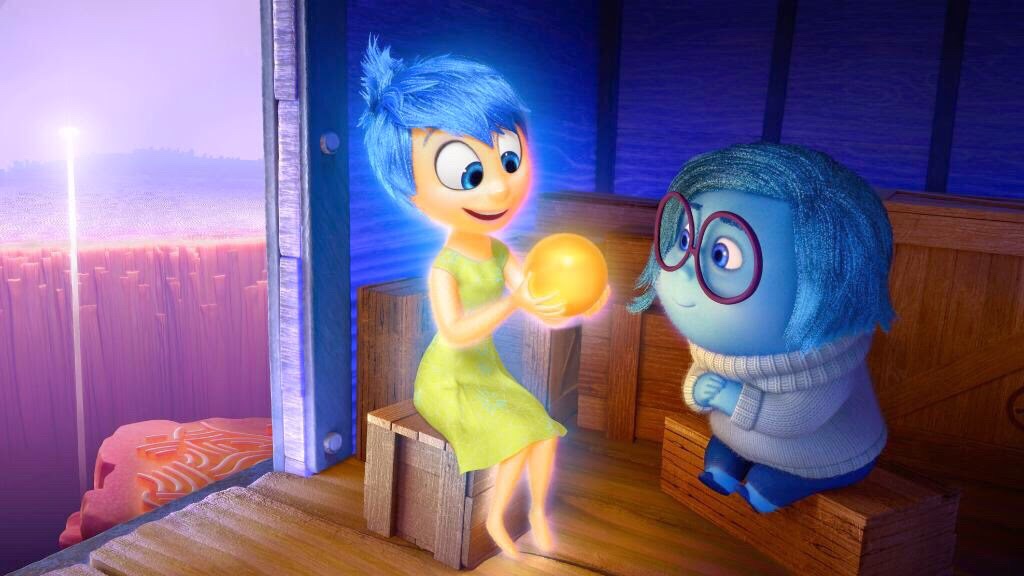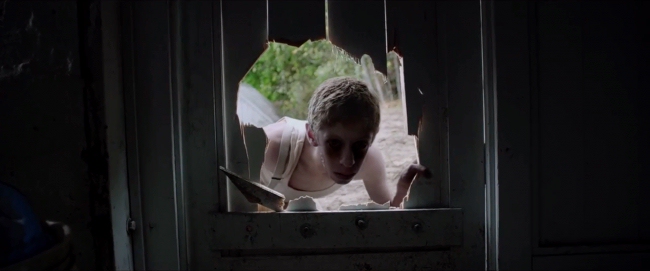A good portion of The Possession is a good movie. Natasha Calis has a strong screen presence for someone so young, and this makes up for the weakness of Kyra Sedgwick and Jeffrey Dean Morgan in their performances as her parents. But, in the end, this very plot-driven story comes to an obvious climax--with the requisite "take me instead" detour that comes with just about any movie in the possession subgenre of horror films--with a nice, seemingly tacked on "twist" of an ending that leaves an opening for an unnecessary sequel.
The problem, though is that through all the drama, you know the plot, the story never gels very well. Sure, we can empathize with a divorced dad just trying to do right by his daughters, except the film never gives us too many examples of this--he gives his daughters pizza on his weekend despite his ex-wife telling him not to, which is cute except that his youngest daughter seems to be a vegetarian because of allergies not just moral reasons, so this is actually an example of his bad parenting. His best parenting is in figuring out something is wrong with his daughter, but after she stabs him with a fork he'd have to be blind not to notice that.
There's another man in the wife's life now, and he keeps reappearing but ultimately gets chased out of the story by the possessed girl never to be seen or really spoken of again. Because Hollywood needs the divorced couple to get back together in the end, you know, and he was in the way. Except, the film never actually gives the husband and wife any reason to get back together. And, his job offer out of state sounds like a good idea... well, it would if the movie bothered to suggest that either of these people were struggling with life monetarily or in any way at all. If he was pining for his ex-wife, if he seemed depressed an lonely without his daughters around in his new house, if there was any depth to any of these characters at all, perhaps we'd have reason to care. Instead, we get a horror film with very few attempts at scares, even fewer successful ones, and a generic, straightforward plot.
That being said, at least The Possession has a plot. Paul Thomas Anderson is a great filmmaker. And, he can tell a good story and get fantastic performances out of his actors. But--and I regret this even as I suggest it, because I understand that PLOT is not actually necessary--I really wish he could discover the idea of having a plot. There's a scene in The Master where the titular Master's son says he sleeps through his father's sermons because he can skip parts here and there and not miss a thing--"He's making this up as he goes," he suggests. And, remarkably, the same seems true of Anderson's film; you could skip a few scenes and still get the whole idea. There are no character arcs, no plot to speak of--well, there is almost a plot, or at least the inkling of a direction, except the film never actually goes that direction and the characters don't change... well, maybe a little, but we don't really see that change happen. We might wonder if there is a real epiphany in Joaquin Phoenix's Freddie Quell walking back and forth and back and forth for at least an entire day, but at best, the epiphany he gets is the same we might get from the sequence: this is going nowhere.
The trailer for The Master includes a few shots that are not in the film, and that happens, sure. But, there is one shot of Phoenix with a gun that hints perhaps at violence or at least the possibility thereof. Maybe he will come to question his Master, maybe even kill him. But, this never happens. In fact, he violently protects his Master and mostly gets away with it.
Chekov would be, well, confused.
Phoenix's Quell has a problem with alcohol, a problem with women, and a problem with his temper. In the end, he's still got at least two of these, and probably all three, albeit perhaps in a more controlled measure. But, this growth, if it is even there, does NOT come from his Master's help, not really. If we believe the Master to be correct in the things he says about aliens and endless battles between good and evil, then this could be one tiny piece of that struggle, but it is so tiny a piece that it doesn't matter. Painted on a cosmic canvas, these two men struggling with their own arrogance and ego is all but meaningless.
One could guess this is the point of the film, but one should expect the point of the film to be, even if only for the briefest of moments, text and not subtext. And, characters should grow (or wither) and change. The order of events should matter. We should not be able to sleep through part of the story and miss nothing.
Then again, at least we get real characters, people with depth in a world where things just happen and demon possessed boxes don't happen into our lives to infuse a plot into the boredom. Arguably, The Master is more realistic--and I do not mean because of the supernatural element in The Possession--in giving us a portrait of life, people who seem real, who have real cares and concerns and struggle with everyday things. But, isn't that why we have life? Shouldn't our fiction have more of a point, or at least a recognizable catharsis? Shouldn't it at least have an obvious endpoint?
The key to a plot is that when it ends, we can recognize that it is over. In The Master, the movie ends, apparently, at the point that Anderson decided for it to end, not at some organic point where the struggles within the story have ended, or at least turned an important corner. There is certainly value to a character study, but even the most aimless and arbitrary character study relies on an arc, something the character wants and in some way seeks. And, failure to obtain can be a reasonable ending to a plot, but a real denouement requires something to come of that failure as well.
The Master is a great film, filled with parts that could probably be rearranged into something far better. But, something is missing.


